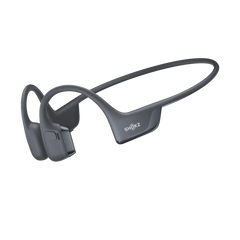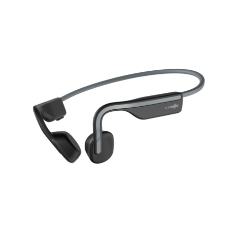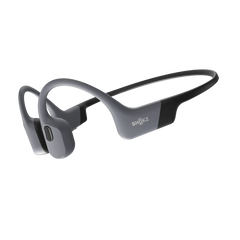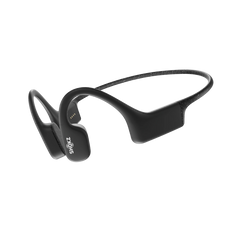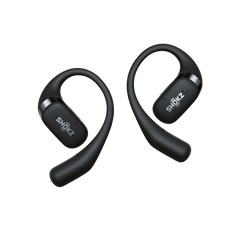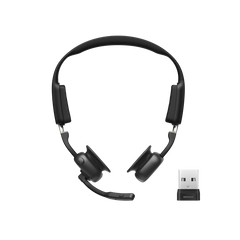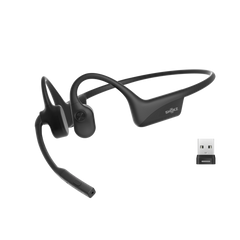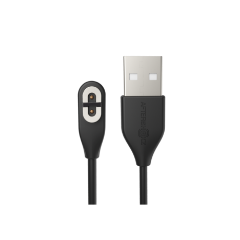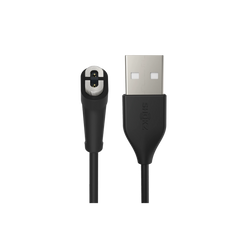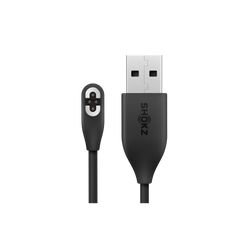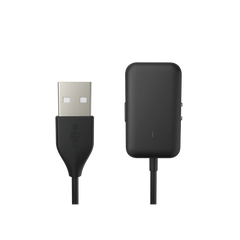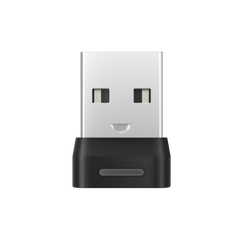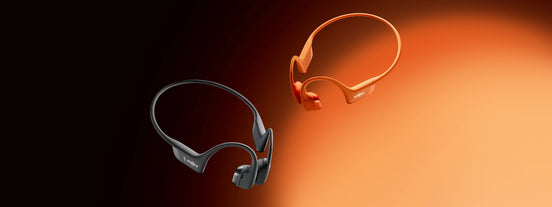Headphones have become a staple of modern living. People rely on them for daily use, whether for work, entertainment, or communication. However, despite their convenience, many users complain of discomfort, especially headaches or even migraines, after extended listening. So, an important question arises: Do headphones cause migraines?
The answer is yes. Factors like snug headbands, too much pressure, loud volume levels, or even noise-cancelling technology can lead to headphones headache problems. Identifying the causes and finding the right solution can help you avoid discomfort and enjoy a painless music session.
In this article, we will discuss headphones and migraine risk, how loud sounds can trigger migraines, and practical advice to avoid such issues. In particular, we'll explain how open-ear headphones reduce headache risks and why they're a better potential solution than regular headphones for those who experience frequent discomfort.
How Headphones Can Lead to Headaches and Migraines
Headphones can cause headaches for various reasons, including pressure on the skull and long exposure to loud noises. The first step towards getting relief is to identify what's causing your discomfort.
Common Causes of Headphone-Related Headaches
-
Headband Pressure and Clamping Force on the Skull
Over-ear headphones typically feature tight headbands that exert tremendous pressure on your skull. This clamping force can be fatiguing, especially around the temples, as it compresses sensitive areas of the head. Over time, this constant pressure can lead to tension headaches, making choosing headphones with an adjustable, lightweight design essential.
-
Prolonged Use Causing Muscle Tension and Strain
Extended use of headphones can cause tension and strain in the head and neck muscles. The constant strain, especially from the heavier models, means that muscles must overwork. This results in tiredness and headphones headache problems to the point where you take the device off. This strain can be alleviated by taking regular breaks, using ergonomics, and using proper techniques.
-
Earbuds Pressing Against the Ear Canal.
Earbuds that sit heavily in the ear canal can cause too much pressure and irritate the sensitive inner tissues. Choosing earbuds with various tip sizes or a more ergonomic design can help lessen these negative effects.
Can Loud Sounds from Headphones Trigger Migraines?
Sound levels also play a significant role in causing headaches and migraines. Listening at high volumes overstimulates the auditory nerves, leading to discomfort and triggering episodic migraines. People with heightened sensitivity to sound, especially migraine sufferers, are particularly vulnerable.
Another problem is headphones and migraine risk from sensory overload. Earphones that cancel out all outside noise can also strain the brain's sound processing, which increases the risk of headaches. This is particularly true for noise-cancelling models, which generate an artificial silence that some find disorienting.
Other Factors That Contribute to Headphones-Induced Headaches
-
Poor Posture
Poor posture while wearing headphones can worsen headphone discomfort. Slouching for hours can lead to stiffness in the neck and shoulders, which often leads to headaches. Sitting in an ergonomic position can help reduce a lot of these problems.
-
Noise-Cancelling Pressure
Noise-cancelling headphones can also be uncomfortable due to pressure buildup around the ears. Some users experience a sensation similar to the pressure felt during air travel, which may trigger a headache. This effect can be mitigated by choosing models with adjustable features.
-
Dehydration & Eye Strain
Dehydration and extended screen time can exacerbate headphone discomfort. Drinking insufficient amounts of water and straining your eyes through excessive digital exposure can spike headache symptoms, so hydration and breaks are important.
Tips to Prevent Headphones from Causing Headaches
While headphone headache problems are frustrating, they are preventable. Making a few adjustments in how you use your headphones can significantly reduce the risk.
Choosing the Right Type of Headphones
Choosing the right style of headphones is important. Over-ear models can be comfortable, but they need an adjustable headband with decent padding. You need to select headphones carefully to ensure a comfortable fit without excessive pressure.
Open-ear headphones are the best consumer option for avoiding headaches. These models won't push up against the skull or ear canal, so they're ideal for longer periods of use. They also allow natural ambient sound, minimising sensory overload.
Managing Volume and Listening Time
Listening at safe volume levels is essential for ear health and headache prevention. Experts advise keeping sound levels below 85 decibels. A good rule of thumb is the 60/60 rule—listen at 60 per cent volume for no longer than 60 minutes at a time.
Taking regular breaks is equally important. Taking off the headphones every hour for a bit also helps your muscles relax, so you don't feel as much strain and discomfort.
Ensuring Proper Fit and Positioning
Proper placement of the headphones can create a huge difference. Adjusting the headband to reduce pressure on the temples helps prevent tension headaches. Similarly, choosing earbuds with the right-sized ear tips ensures a snug but comfortable fit without pressing too hard inside the ear canal.
Why Open-Ear Headphones Are the Best Solution
Open-ear headphones present an excellent alternative for those who often experience headphones discomfort. These headphones rest above the ears, relieving pressure and resulting in a natural listening experience.
How Open-Ear Headphones Reduce Headache Risks
One of the biggest advantages of open-ear headphones is that they do not directly press down on the head and ears. Unlike traditional over-ear or in-ear models, this design leaves the ear canals open, promoting airflow and lessening the chances of discomfort.
Another way open-ear headphones minimise the risk of headaches is by eliminating sensory overload. Since users can still hear their environment naturally, the brain doesn't need to work as hard to process sound, reducing the risk of migraines.
Who Should Consider Open-Ear Headphones?
Open-ear headphones are perfect for those who experience frequent headaches or migraines from traditional models. They are also ideal for users who want to wear headphones for long periods of time like people who work from home, commuters and athletes.
Open-ear headphones are a boon for outdoor enthusiasts. Cyclists, runners, and pedestrians can stay aware of their surroundings while enjoying their music. This enhanced comfort also makes them ideal for anyone experiencing ear fatigue with traditional headphones.
Features to Look for in Open-Ear Headphones
When selecting open-ear headphones, it is crucial to seek models that emphasise comfort, durability, and sound quality. A lightweight and ergonomic design ensures the headphones remain secure without adding unnecessary pressure.
Another important factor is battery life. Battery performance is vital for anyone who uses headphones throughout the entire day. High-quality sound transmission, such as bone or air conduction technology, also ensures a clear and immersive listening experience.
What Are Some Of The Best Options For Open-Ear Headphones?
Among the many options available, Shokz emerges as a market leader, delivering innovative technology coupled with exceptional comfort. Here are the two most suitable headphone options:
-
Shokz OpenFit Air: The Shokz OpenFit Air headphones' open-ear design provides clear, natural sound while still allowing you to hear your environment. These wireless headphones are lightweight and engineered to stay securely and comfortably in your ears during workouts, commutes, and outdoor activities. With impressive battery life and seamless Bluetooth connectivity, the OpenFit Air ensures you stay connected without sacrificing comfort or safety.
-
Shokz OpenFit: The Shokz OpenFit headphones offer a similar open-ear design that is also aimed at everyday comfort and situational awareness. Built for long listening sessions, these headphones provide a balanced, crisp sound without cutting you off from the world. With a secure and adjustable fit and intuitive yet tactile controls, these earbuds are perfect for both work and leisure, ensuring a solid, pleasurable listening experience without straining the ear.

Upgrade to Open-Ear Headphones for Better Comfort, Ear Health, and Pain-Free Listening
Can Headphones Cause Migraines? The answer for many users is yes, but the right choice of headphones can avoid discomfort. By choosing open-ear headphones, managing listening habits, and ensuring a perfect fit, you can prevent headphones headache problems and enjoy an uninterrupted audio experience.
Open-ear headphones offer the best solution for those who want a pain-free and comfortable option. They eliminate pressure, lessen headphone discomfort, and enable users to stay attuned to their environment. It is time to make the switch if you are looking for the most comfortable and headache-free listening experience.
